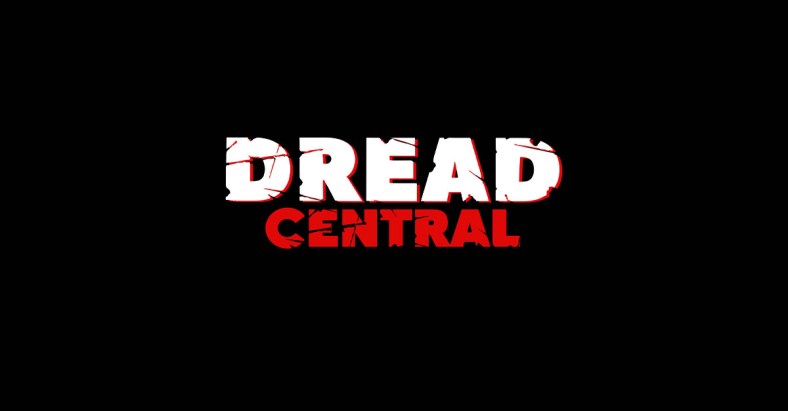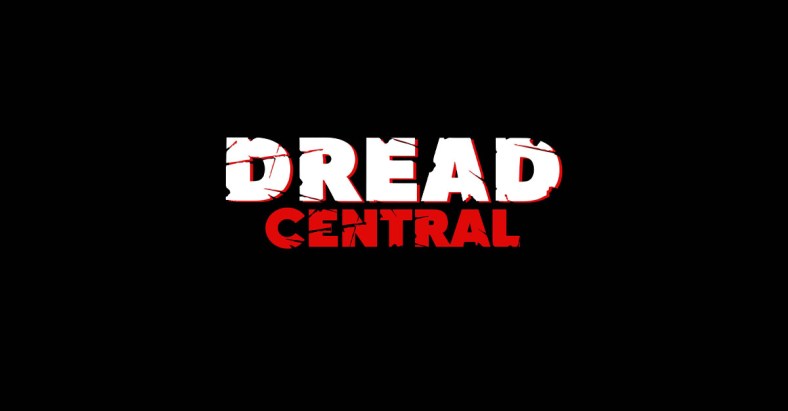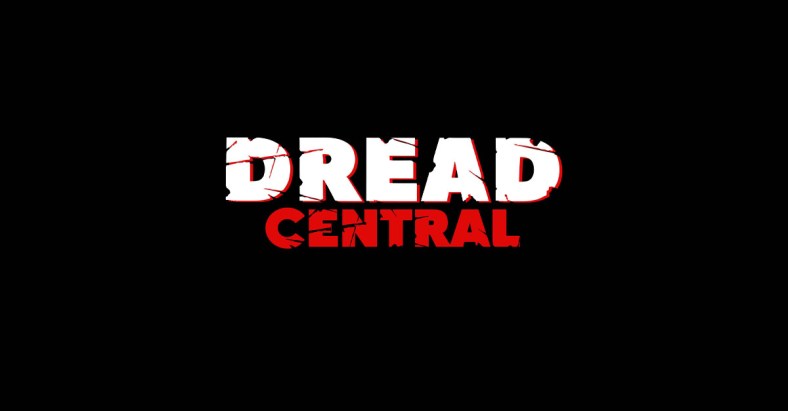Top 10 Made-For-TV Horror Movies

The problem inherent in being a horror fan– more distinct to scare flicks than any other genre, I think– is that, despite the deluge of titles available, it is nearly impossible to settle on something to watch. As subgenres bend fluidly, capitalize on contemporary conventions, and subvert established norms, there are more flavors of horror available now than ever before– heck, “Nazi Zombie” is now a bona fide subdivision of the horror genre. This phenomenon is no more apparent than in the smattering of offerings from ABC’s “Movie of the Week,” television movies originally aired Tuesday nights at 8:30 pm Eastern time before shifting first to Saturdays, then to Wednesdays, then back to Tuesdays– indeed, ABC played with chronology more frequently than the Halloween franchise did.
Nonetheless, amongst the breadth of titles available, their myriad horror offerings stand out. Beyond the opportunity to explore plots and characters perhaps less suitable to mainstream cinema chains, the ABC “Movie of the Week” productions were often well-acted, handsomely designed, and ingenuously suspenseful. Since that time, networks have still appeared eager to conceive an equitable number of resourceful and effective horror films on the small screen. When overwhelmed by the sheer quantities of titles to choose from, then, why not take the opportunity to revisit old classics?
Afraid of Scarecrows? ABC has that! Afraid of children phoning from beyond the grave? ABC has that, too! So, while by no means the definitive list, I present to you my picks for the Top 10 Made-for-Television Horror Movies. Going in, though, it’s worth noting some of the subjective criteria I used in assembling this– I sought out and selected films based on their production design, resonance, longevity, and suspense (read: nightmares after the fact), and their overall creativity. That in mind, some expected picks might be missing from this list (sorry, Salem’s Lot fans), but as noted, the beauty in the genre, overwhelming as it may seem at first, is that there truly is something for everyone.
10) The Screaming Woman (1973)

Perhaps the greatest joy found in Made-For-Television movies is how, for whatever reason, it makes it okay for formative performers to dabble a bit in genre pictures. This is perhaps best exemplified with Olivia De Havilland’s hoot-of-a-performance in Jack Smight’s The Screaming Woman. Adapted from a Ray Bradbury story (that alone should have you interested), De Havilland plays Laura Wynant, a wealthy woman recuperating in the country after her release from a state clinic, who finds that someone has buried a woman on her property– the only problem is, no one believes her. While the innate silliness of the premise and contrived denial of everyone around De Havilland (the ease with which everyone dismisses her claim is astounding) might mar the proceedings, her performance is still top-notch, and Smight keeps the tension tight until the horrific final frame– try to shake that shot from your memory.
9) Home for the Holidays (1972)
No, not the Holly Hunter comedy from the ‘90s, this is the other Home for the Holidays that’s lead by a quartet of phenomenal performers. Much like Woman, Holidays has an A-list cast right on the cusp of their respective transitions from television names to genuine stars performing alongside some of the Golden Age’s best. Eleanor Parker leads the cast– which includes Sally Field, Julie Harris, and Jessica Walter– as one of four sisters returning home (for the holidays) after their dying father (Walter Brennen) discloses his suspicions that his new wife (Harris) is actively trying to poison him. Unique from the others on this list, John Llewyn Moxey’s film is, in effect, a slasher film, and it’s a damn fine one at that. The killer’s costume is inspired, the set design mesmerizing– tell me you wouldn’t want to live there, killer and all– the performances compelling, and the scares legitimate. Like juice from a Christmas ham, Moxey’s suspense and mystery are of the “drip, drip” variety until a climactic pivot to full-blown slasher horror. Truly, this is one family dinner you’ll be happy to have attended.
8) Trilogy of Terror (1975)
Okay, this choice might be a bit controversial. Though fondly remembered for the infamous Zuni Fetish Doll vignette (and that vignette is, admittedly, enough to warrant mention on this list), the two preceding horror shorts, though superbly acted by genre icon Karen Black, are lackluster in comparison. They’re by no means bad, it’s just that the narratives are so dependent on the stale twists (even by 1975 standards) that nothing before the “gotcha” moment has much impact. That said, Dan Curtis endeavors to enliven the picture with a Hammer-esque color pallet and design, a gothic soundtrack, and a refreshing desire to tread on the dark side, particularly in the “Millicent and Therese” piece.
7) The Victim (1972)

The late and interminably endearing Elizabeth Montgomery plays Kate Wainwright, a San Diego socialite who visits her recently-separated sister in rural California in Herschel Daugherty’s surprisingly-effective suspense yarn The Victim– also titled Out of Contention. You see, Kate’s sister is killed right after the title card, and unbeknownst to her, the body is hidden away in the cellar. Think Black Christmas sans the memorable “Billy” or innumerable body count– with, of course, a smidgen of genre cliché– and you’ll have a good sense of what The Victim has in store. Though the ending is lackluster, The Victim is a premier “first-time” experience, a horror film with absolutely no replay value whose first viewing is still so incredibly effective it warrants a look. Try not to clutch your knit blanket as Montgomery wanders the abandoned country estate, sensing something amiss, without the means to identify what exactly has happened. This is unalloyed suspense, folks, and it manages to engender an imposing atmosphere without contemporary gimmicks.
6) It (1990)
It’s been said many, many times before, and unfortunately, I have to agree– It isn’t quite as good as I remember it (ha!). Granted, as a kid, Pennywise and his ghoulish shenanigans scared the hell out of me, but in retrospect, I’d be happier with a condensed “Here’s Tim Curry” highlight reel instead of watching the entire thing again.
Tommy Lee Wallace does an admirable job of capturing the mood of King’s novel, and some of the individual set-pieces work tremendously well (particularly Eddie Kaspbrak’s attack in the shower), but the entirety of Part 1 feels like a prelude to Part 2, and Part 2 feels like a poor retread of Part 1. The cyclical nature of the miniseries, then, is less than ideal. As noted, though, Curry’s performance alone makes it at least worth a watch, and for King completionists, you could do much, much worse.
5) Don’t Go to Sleep (1982)

I should preface this by stating that my mom is an unequivocal horror buff. Had it not been for her deliberate, though guided, exposure to horror as a child (she showed me Child’s Play at four, nearly scarring me for life), I wouldn’t be the genre fan I am today. I mention that because she’s often more adroit than I am when it comes to discerning how a particular film is going to play out. How incredibly surprising, then, was it for us to find that Richard Lang’s Don’t Go to Sleep is one of the most pleasantly mercurial and genuinely unsettling horror films we’ve seen lately, television or otherwise.
I’m not suggesting that Lang is non compos mentis, but some of the narrative turns on display here are shocking even when weighed against the barometer of a genre whose present culture now includes a (misinterpreted) “torture porn” subgenre. Beyond the sheer brazenness of the narrative, though, the late Valerie Harper of Mary Tyler Moore and Rhoda fame is a sympathetic and surprisingly capable lead, the child performers are uniformly excellent (including Oliver Robbins of Poltergeist fame; poor kid can’t catch a break when it comes to haunted houses), and the violence and scares are audacious for a television movie. You’ve got burning beds, dead children, homicidal pizza rollers, and an ending that, while by no means unexpected, manages to twist your gut one final time. Don’t go to sleep, and don’t miss out on this one.
4) Someone’s Watching Me (1978)
These past few years have been brutal for horror fans. Every other day it seems like another genre maestro, responsible for so much more than just scaring us silly, sadly passes away. The inimitable John Carpenter, though, is still with us– and I’d really love for him to direct another movie because, yes, I really liked The Ward (2010).
One of his lesser-known, though incredibly effective, horror films is 1978’s Someone’s Watching Me. Made immediately prior to Halloween, Someone’s Watching Me is led by the spellbinding Lauren Hutton who plays Leigh Michaels, a young professional new to Los Angeles who soon suspects that someone has been breaking into her apartment while she’s away. Carpenter imbues the film with his trademark sensibility for rendering the ordinary terrifying, without one particular standout being the protracted hide-and-chase scene that starts in the apartment complex’s basement and ends in an armrest-clenching sequestration beneath a floor grate. Hutton, too, exhibits the same resourcefulness and unfettered resolve that would later define pioneering Scream Queen Jamie Lee Curtis. Give this one a watch on a chilly October evening– you won’t regret it.
3) Dark Night of the Scarecrow (1981)
The fear factor here is less nuanced than in the others– scarecrows are, without limitation, terrifying. This past weekend, Annabelle scared me, but the scarecrow conduit she possesses horrified me even more. I’m not sure if it’s some degree of uncanny valley, some deep-seated aversion I have to farm work, or just those hollow, vacant eyes, but scarecrows are top of the list when it comes to nightmare induction.
Dark Night of the Scarecrow is most notable for being one of the only technically-proficient scarecrows horror films ever made (why this subgenre is so hard to crack when its antagonists are so inherently frightening is beyond me), but to remember it only for that does a disservice to the legitimately terrifying film director and veteran novelist Frank De Felitta created here.
Rich with pathos and an uncommon concern for character (even the most odious of them), Dark Night of the Scarecrow is about more than revenge-seeking country props, especially since it could convincingly be interpreted as an allegory for the repressed and unspoken crimes of the South. Whether you find that depth or not, though, isn’t entirely relevant, because either way, Dark Night of the Scarecrow will have you twitching every time a branch gently taps, like the fingers of straw, against your window.
2) When Michael Calls (1972)
When I first watched this last year, I was surprised to learn that my mom– genre guru that she is– had never seen it all the way through. Years ago, she, my aunt, and two uncles had just moved to Georgia with my grandparents, and in middle school, my aunt was charged with babysitting one weekend, just her and three younger kids in an isolated new house with thick, dark woods in the backyard– what could go wrong? Well, When Michael Calls aired (ABC had shifted its “Movie of the Week” block to Saturday by this time), and within the first ten minutes, the first time Michael does as the title suggests, the four of them were too horrified to watch further. They shut the television off and huddled together in an upstairs bedroom until my grandparents came home.
I’d make fun of them for this were it not for the fact that as an adult, I, too, was nearly ready to curl up and cry. I don’t know why, but like scarecrows (and an element from the forthcoming Number One pick), whiny children’s voices terrify me. No better is this encapsulated than in Michael’s voice, particularly the infamous term of endearment, “Auntie, my Helen.” Though the mystery isn’t that hard to decipher, Philip Leacock’s direction is so masterful, so finely-tuned and drenched with dread, that even though you know how this is going to end, something about Michael’s ostensible clairvoyance, his ability to conceivably control things from beyond the grave, the way Leacock’s camera tilts and pans to disorient the view, makes you question your own sanity. The first call might be a joke, but the one after that conjures a dreadful thought– what if it really is Michael?
1) Don’t Be Afraid of the Dark (1973)
This might be a predictable pick, yes, but it’s also the only one I saw as a young kid, so the experience I had with it might be the closet I ever come to capturing the rapturous terror of an ABC “Movie of the Week” the IMDB User Reviews hold so dearly.
If you were to only watch Troy Nixey and Guillermo Del Toro’s gorgeous but considerably misjudged 2010 remake, you’d be right to think that the “little goblin men in walls” premise could never work effectively beyond satire. The thing, though, is that it did work– it worked really, really well. With Kim Darby thrown in, the entire premise, from plot to casting, of Don’t Be Afraid of the Dark seems like the nadir of substandard horror dreck. Yet the film is one of the few films, as silly as it might seem now, that terrifies me every time I watch it. Darby is surprisingly effective as Sally Barnum, a woman who, along with her husband (Jim Hutton), inherits an old manor only to find that vest-pocket goblins intend to kidnap her. Even as I type this I’m cognizant of how fundamentally silly the entire thing is, but then I remember the whispers in the walls, the gloriously orchestrated bathroom scene, and the final, heart-pounding climax (if you accuse the film of anything, it certainly won’t be an unwillingness to up the stakes).
What works most effectively, though, is the horror-fantasy hybrid. Indeed, with the release of Christopher Golden and Guillermo del Toro’s supplemental novel– Blackwood’s Guide to Dangerous Fairies– the original film’s legacy rivals even the most revered of horror films. The entire universe, from John Newland’s original to Del Toro’s expansion of the goblin mythos, is ripe with nightmarish possibilities.
Well, there are my Top 10 Made-for-Television movies. Please let me know what you think, direct me toward any titles I may have missed (I’m always eager to hear recommendations), and share any first-time horror experiences you’ve had. Television, at the time, was far more accessible to young kids than the cinema was, and I think that’s why these films are remembered as fondly as they are. Not only are they scary, but they were responsible for introducing an entire generation to the miraculous world of horror, and honestly, what a beautiful thing that is.
Categorized:Editorials Lists News

